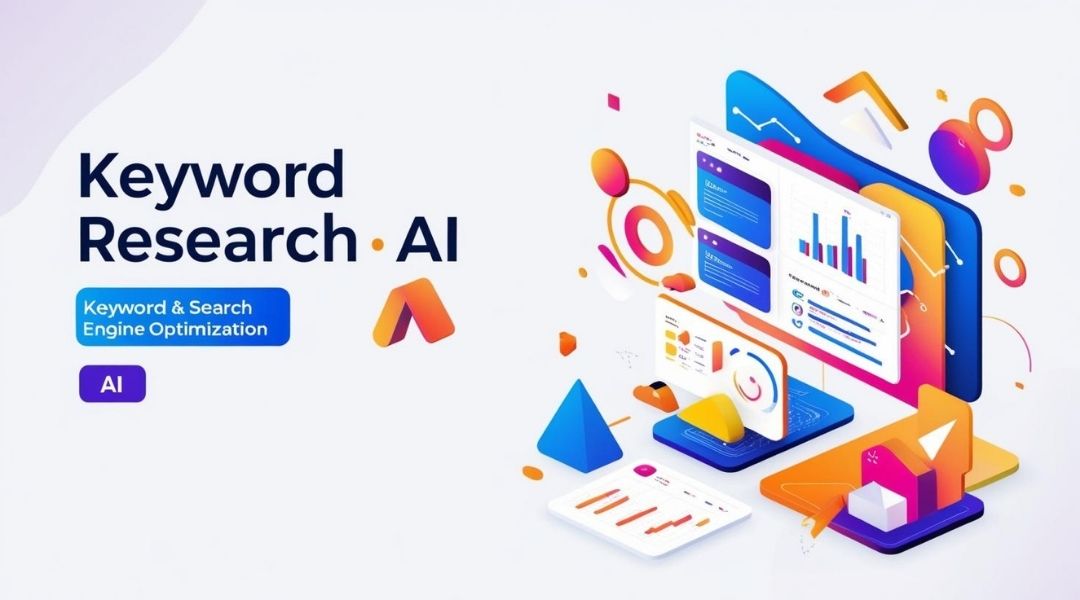AI search engines are rewriting SEO strategies as millions seek instant, conversational answers from platforms like ChatGPT and Bard. Meanwhile, nearly 40% of Gen Z opts for TikTok over Google for queries, upending standard approaches.
Marketers need to change how they use keywords, use structured data, and make content that works with how people search online now. Keyword and backlink strategies are outdated. Conversational AI requires answers that fit the situation. Brands must adapt swiftly to stay fully visible and remain competitive. Search intent? AI has been redefining it since day one. This is the beginning of that shift.
How AI Is Redefining Search Intent
AI changes how you interpret what users want. Traditional keyword focus may lose relevance as AI-based systems prefer well-structured, contextual details. Social media searches demand visual content.
Big names dominate because they can invest more in content strategies and ads. You might notice local searches become more personalized, with AI delivering recommendations based on location and behavior. Smaller brands risk falling behind if they lack resources for advanced optimization.
Conversational tools like ChatGPT prioritize direct, detailed responses instead of brief snippets. Gartner predicts 50% of all searches will be influenced by AI tools by 2026. This shift raises questions about fairness, as large companies may gain even more visibility.
Stay prepared by adopting a strategy that aligns with AI SEO. This helps you remain relevant throughout change.
Transforming Keyword Research with AI Tools
- AI-Driven Data Collection: You gain insights by analyzing massive keyword sets through advanced AI systems. AI-driven data reveals hidden search patterns faster than manual methods. This boosts your ability to find unique phrases that competitors miss. It also helps you refine content that matches shifting user interests.
- Predicting Future Trends: You can forecast rising queries that signal fresh opportunities. AI-driven research can spot emerging terms before they become widely known. This proactive approach boosts your search visibility in crowded markets. AI tools keep your content relevant and your traffic growing.
- Refining Your Strategy: You can pinpoint phrases by checking traffic volume and competition metrics. AI offers deeper connections between similar terms and user intent data. This clarity drives decisions for your content campaigns across various topics. By using precise keywords, you increase conversions while attracting more leads.
Adapting to Voice-Powered Search Queries
You want to refine your content. Voice search queries are unique. They rely on longer, more conversational phrases.
For instance, you can analyze voice data to find patterns. Users typically speak more casually, so phrase your headings as questions. AI tools can examine these patterns and then suggest content changes or structure updates.
Try reworking your page text to sound natural and direct, matching your audience’s typical speech. Pay attention to analytics that measure voice search engagement. Evaluate impressions and conversions to guide future adjustments.
This approach helps you drive more organic traffic. Machine learning and data mining can also highlight emerging trends, giving you time to adjust. You can experiment and then refine your approach based on metrics and targeted feedback.
Voice queries often require less typing, boosting searchers’ speed.
Focusing on Contextual Content for Ranking
- Platform Selection: You see how each AI platform shapes interest with contextual answers. ChatGPT links with Bing, while Perplexity highlights conversational search outputs. Bard and Claude appear as new competitors with varied user appeal. You gain traction by noting adoption trends for targeted SEO.
- Behavior Patterns: AI-driven engines respond to language, so context boosts your relevance. They pick up cues and adjust answers based on user questions. Logs from Google Search Console reveal where visitors find your material. You see traffic trends showing how your content meets user expectations.
- Refined Strategy: Leverage platform insights to craft context-driven updates for user requests. Consider how ChatGPT values authoritative references while Perplexity values interactive queries. You shape your content plan by noting each engine’s data preferences. You can test forums or share research to boost AI visibility.
Importance of Structured Data and Schema Markup
Structured data helps search engines identify your webpage content with clarity. It adds standardized tags that highlight key elements, like products or events. Over 60 % of AI results include rich snippets from schema-powered pages.
You increase visibility by boosting your chances of landing featured snippets. These are examples of prominent placements. This method also boosts trust, since readers see immediate answers or previews.
It strengthens your presence in knowledge graphs. These graphs help search tools piece together data for consistent replies. Schema also assists voice-based platforms, helping them retrieve details that match a user’s spoken query.
You gain extra exposure across AI-driven systems, including chatbots and virtual assistants. More visibility leads to higher click rates and improved conversions. Your approach meets the demands of changing SEO and AI preferences.
Optimizing for Personalized User Experiences
You want your site to match each visitor’s unique needs and interests. AI-based personalization helps you meet needs effectively.
- Behavior-Based Customization: Search engines analyze click patterns to refine each visitor’s content suggestions. They apply user histories to show results linked to past browsing choices. This approach helps you engage visitors who prefer specific information or products. You can optimize content by addressing these patterns and preferences.
- Personalizing Search Results: The same keywords might produce different outcomes for different visitors. AI systems collect data like past searches, clicks, and article interests. This approach personalizes results to match known topics each visitor prefers. You should broaden your coverage to meet various user preferences.
- Boosting Engagement Through Intent-Focused Content: Identify questions your audience actively asks. Use AI data for deeper insights. Produce content for specific needs. Satisfy user intent to boost trust.
Preparing for Real-Time Algorithm Changes
Keep an eye on real-time updates in Google’s AI Overviews because they shape patterns. They emerged from the postponed Search Generative Experience, showing how quick engine shifts can happen. You should watch for signals like shifts in click-through rates and user engagement.
Tracking brand mentions on sites like Reddit may boost visibility if you respond quickly. Adjust your on-page copy to align with insights from AI-powered algorithms each week. Stay aware of frequent adjustments since Google’s systems favor helpful, accurate content that follows EEAT.
Prepare content variations to address shifting demands, meet user questions, and maintain steady rankings. Try AI-generated drafts, but often proofread to avoid penalties for low-quality text. Aim for a flexible strategy that adapts whenever new signals appear and shifts quickly.
Leveraging Predictive Analytics in SEO Strategies
Predictive analytics spots potential search waves that improve your SEO approach. It shapes content efforts and readies you for traffic spikes.
- Forecast Shifts: Holiday searches often surge, so plan ads early. Adjust pages for calmer periods to preserve visibility. Prior results hint at future patterns worth targeting. Timely changes help capture shifting user interests effectively.
- Predict Behavior: Netflix studies user data to predict viewer choices next. That principle refines SEO by forecasting changes in user interest. You can adjust keywords to match user preferences quickly. Staying proactive strengthens rankings and boosts steady growth.
- Drive Proactive Action: A poker site changes SEO when the World Series of Poker spikes. This move uses gaming interest to gain more audience attention. Predictive data shows peak times that guide timely content updates. Regular reviews carefully sharpen your approach for future spikes in traffic.
By leveraging predictive analytics, you can anticipate search trends, refine your strategy, and stay ahead of the competition. Proactively adjusting your content and keywords ensures that your SEO remains dynamic and responsive to evolving user behavior. With data-driven insights guiding your approach, you’ll be well-prepared to capture new opportunities, maximize visibility, and sustain long-term growth.
Integrating Chatbots into the User Journey
You can place chatbots across your site to give visitors immediate help at any hour. These chat-driven tools can offer product suggestions based on user input. They gather leads and automate common questions.
They also keep visitors on your platform longer by offering rapid responses to routine queries. Brands that engage chat-driven assistants see a boost in conversions and customer satisfaction. 94% of businesses have repetitive tasks that bots handle faster than people. This frees employees to plan campaigns and focus on creative work.
Chat-centric support fosters stronger loyalty by resolving issues before frustration sets in. Real-time assistance builds trust and reduces cart abandonment. You gain an anytime solution that personalizes interactions and supports your revenue goals.
Continual refinements improve chatbot accuracy and enrich user flow.
AI search engines are reshaping how businesses appear online. They interpret intent more accurately, which influences search rankings. Quick site speed, friendly to users’ layouts, and consistent content updates show that you care about people’s browsing experiences.
Studies suggest that about 30% of global searches come through voice features, so considering mobile compatibility and natural wording can boost visibility. Keep a steady eye on updates from popular search platforms and tweak your approach. Your vigilance and adaptability strengthen your brand’s online presence.
Sometimes minor adjustments amount to big leaps in traffic.









